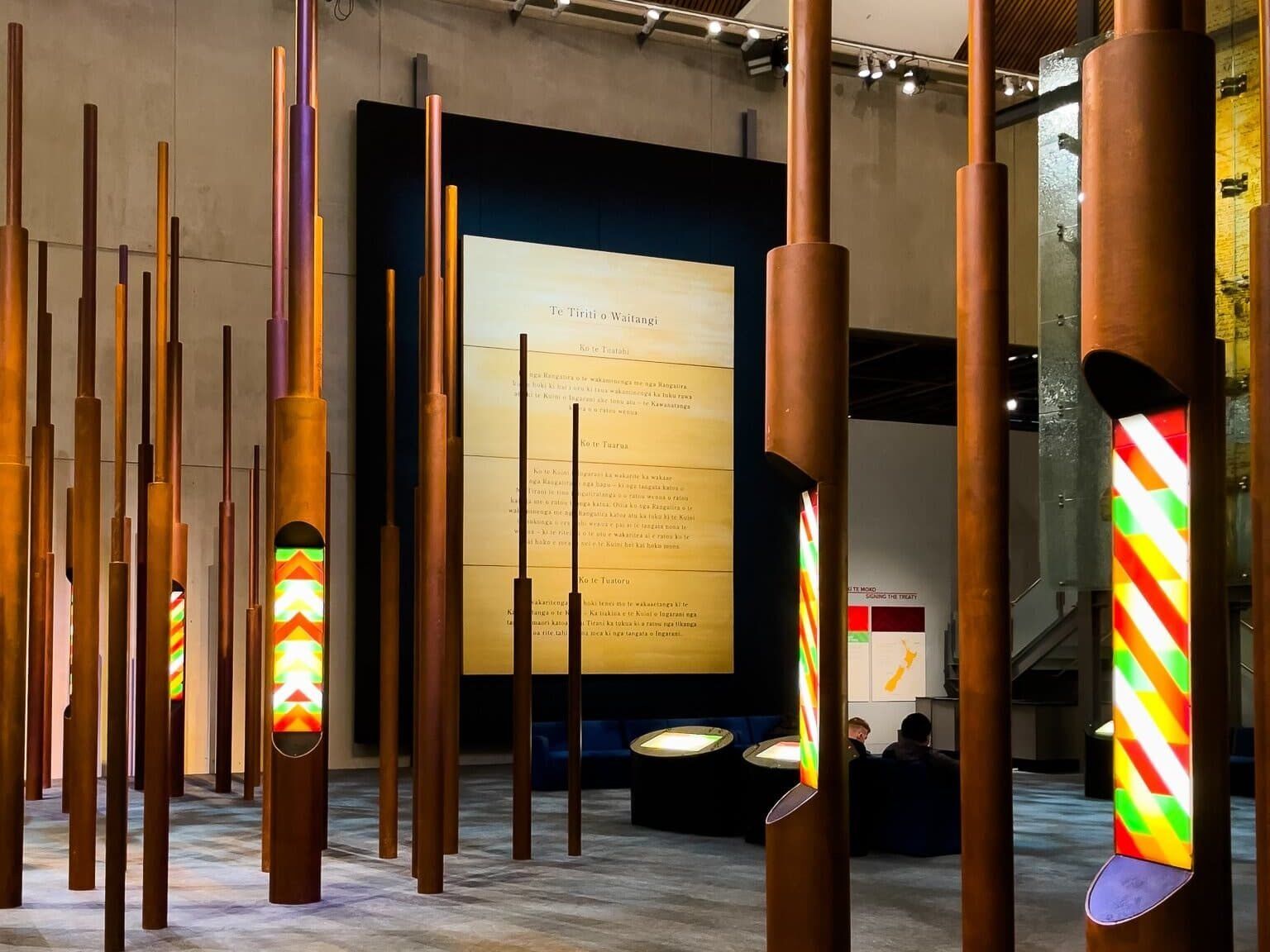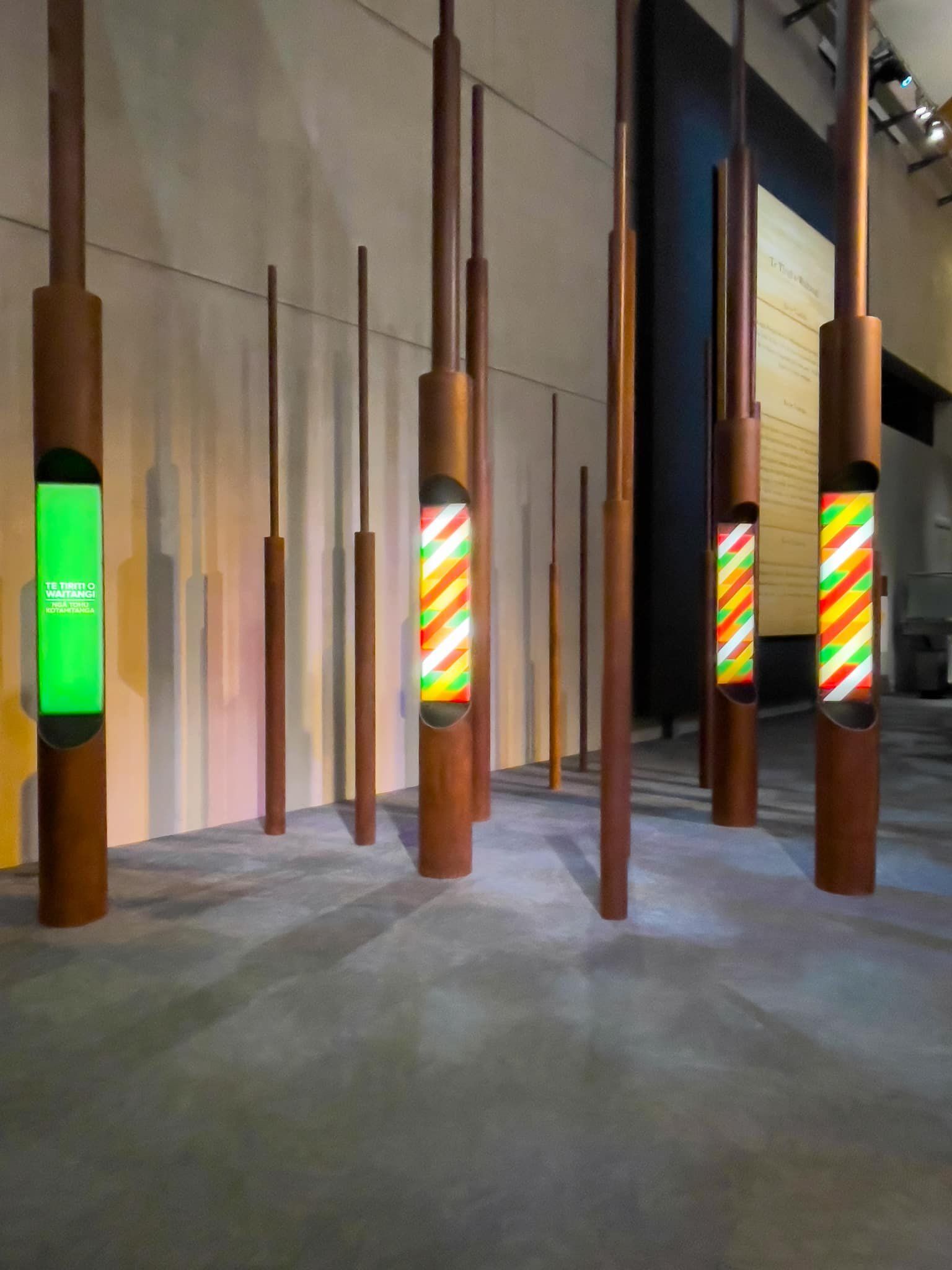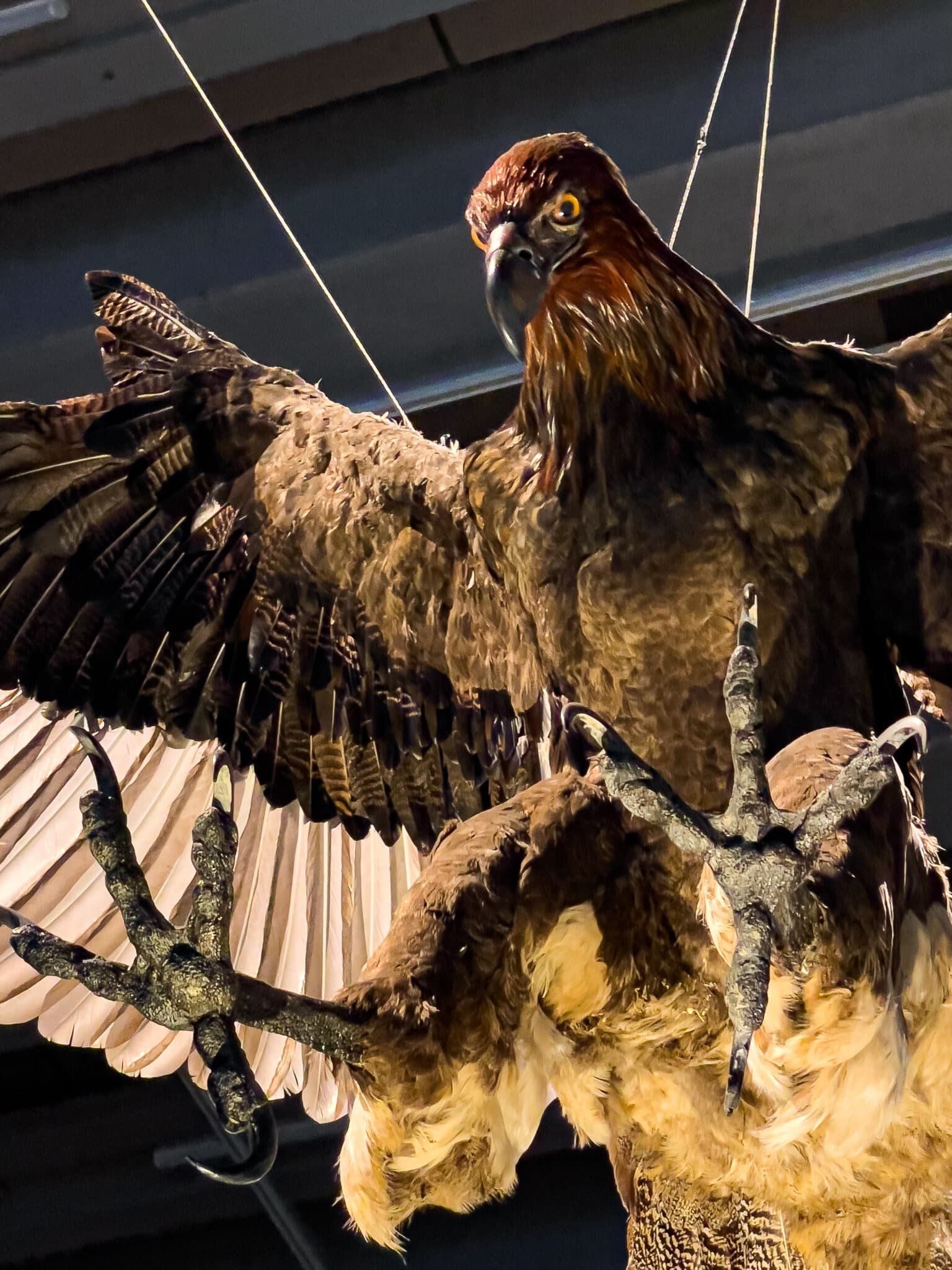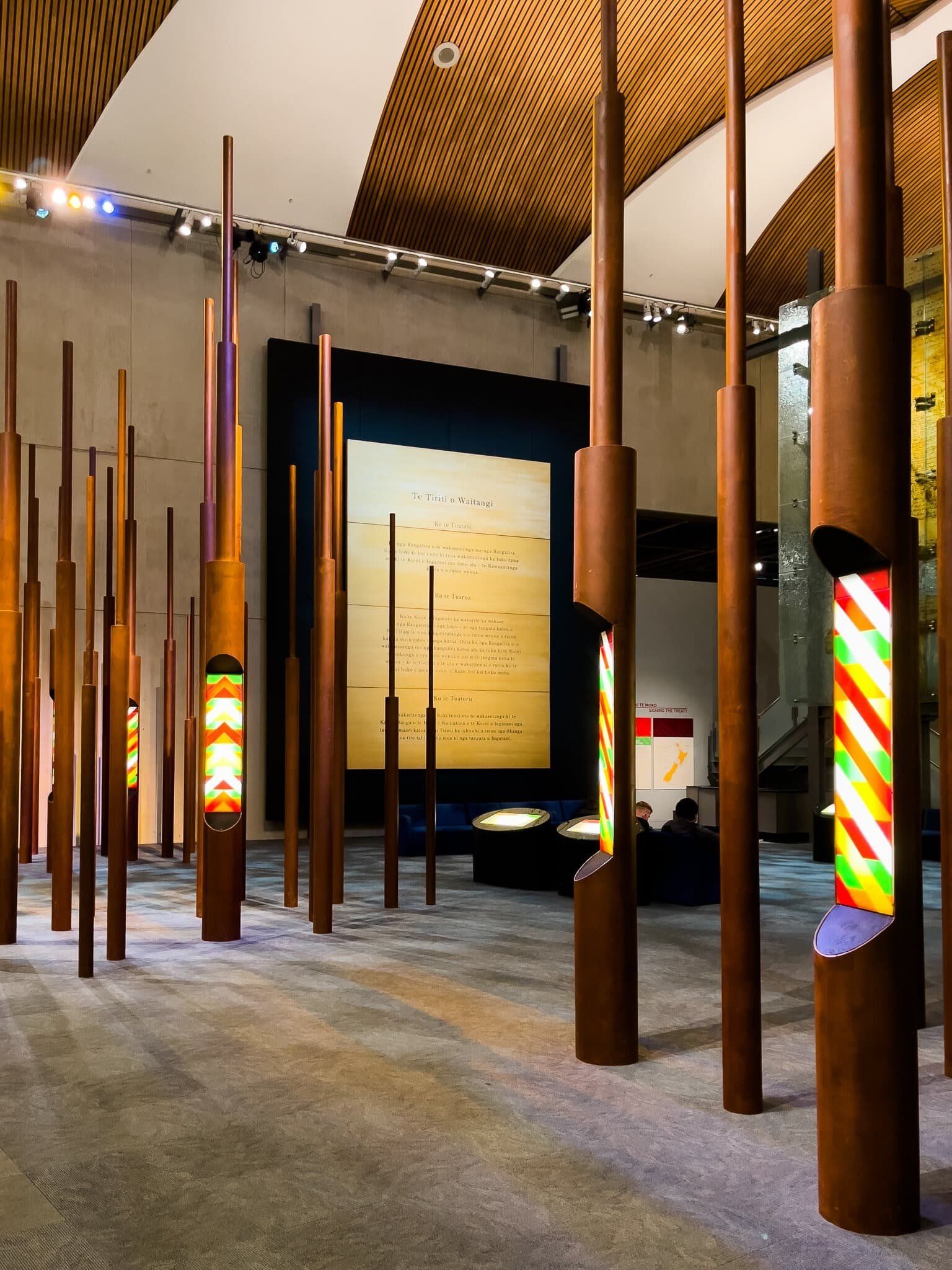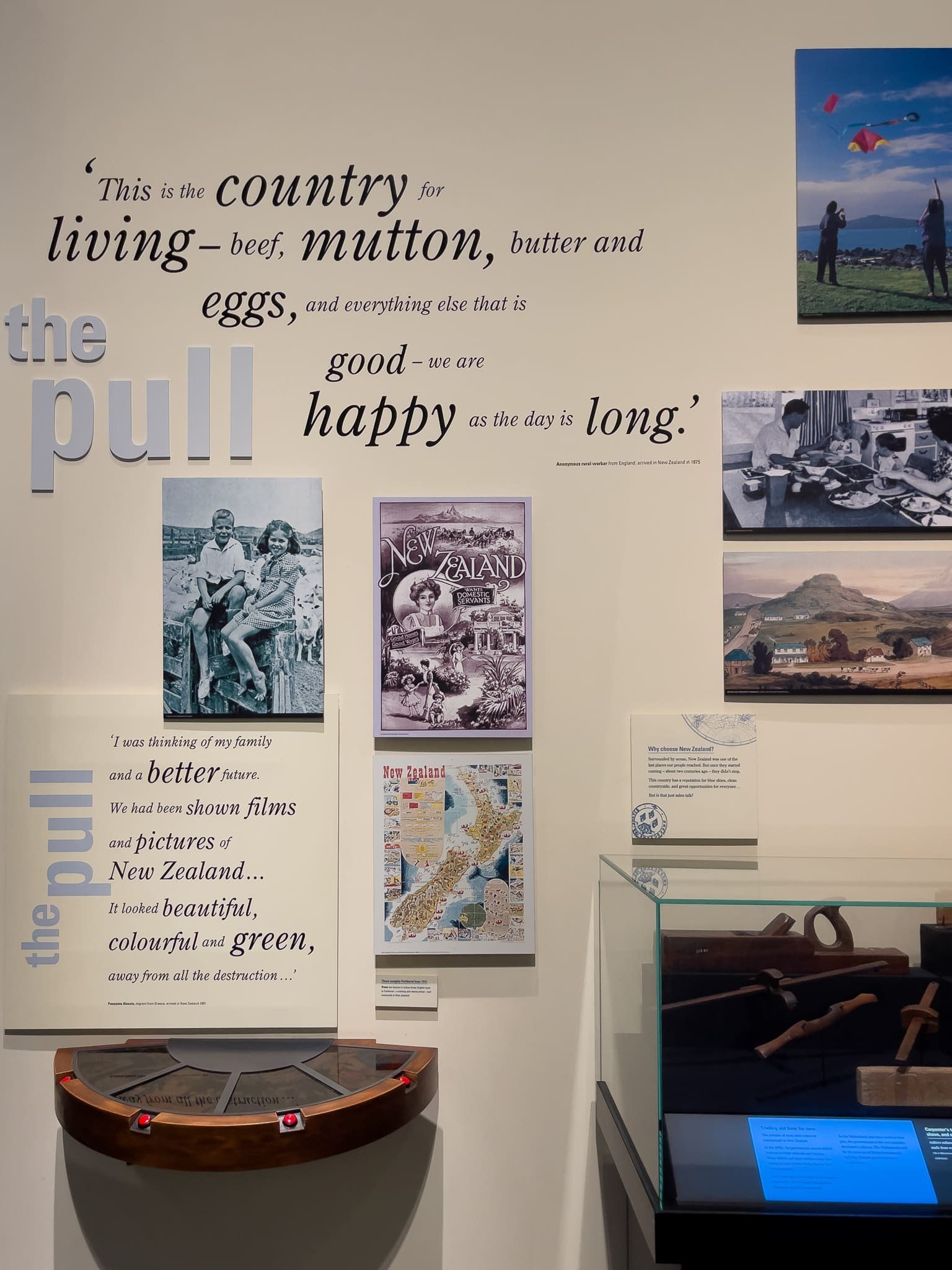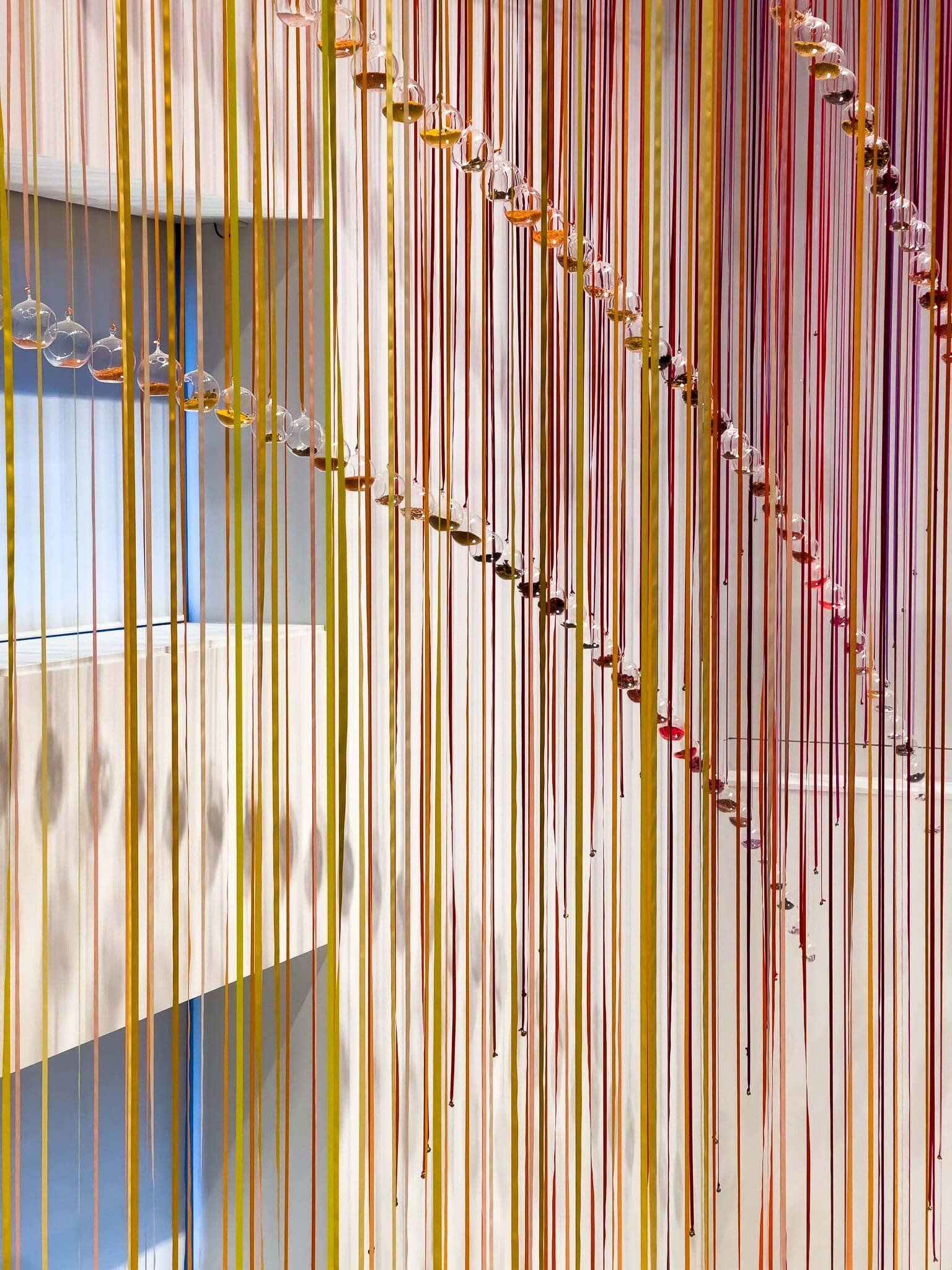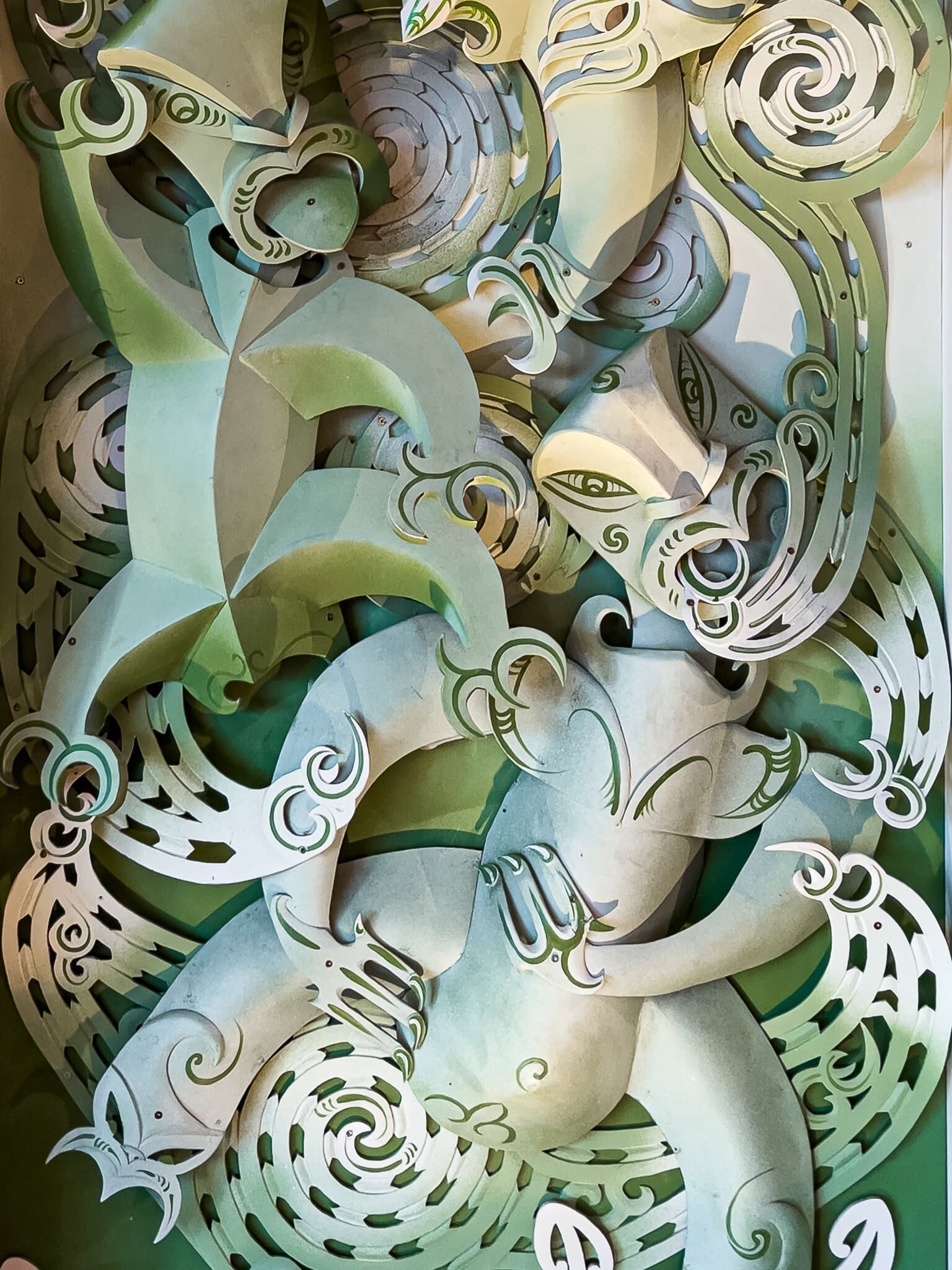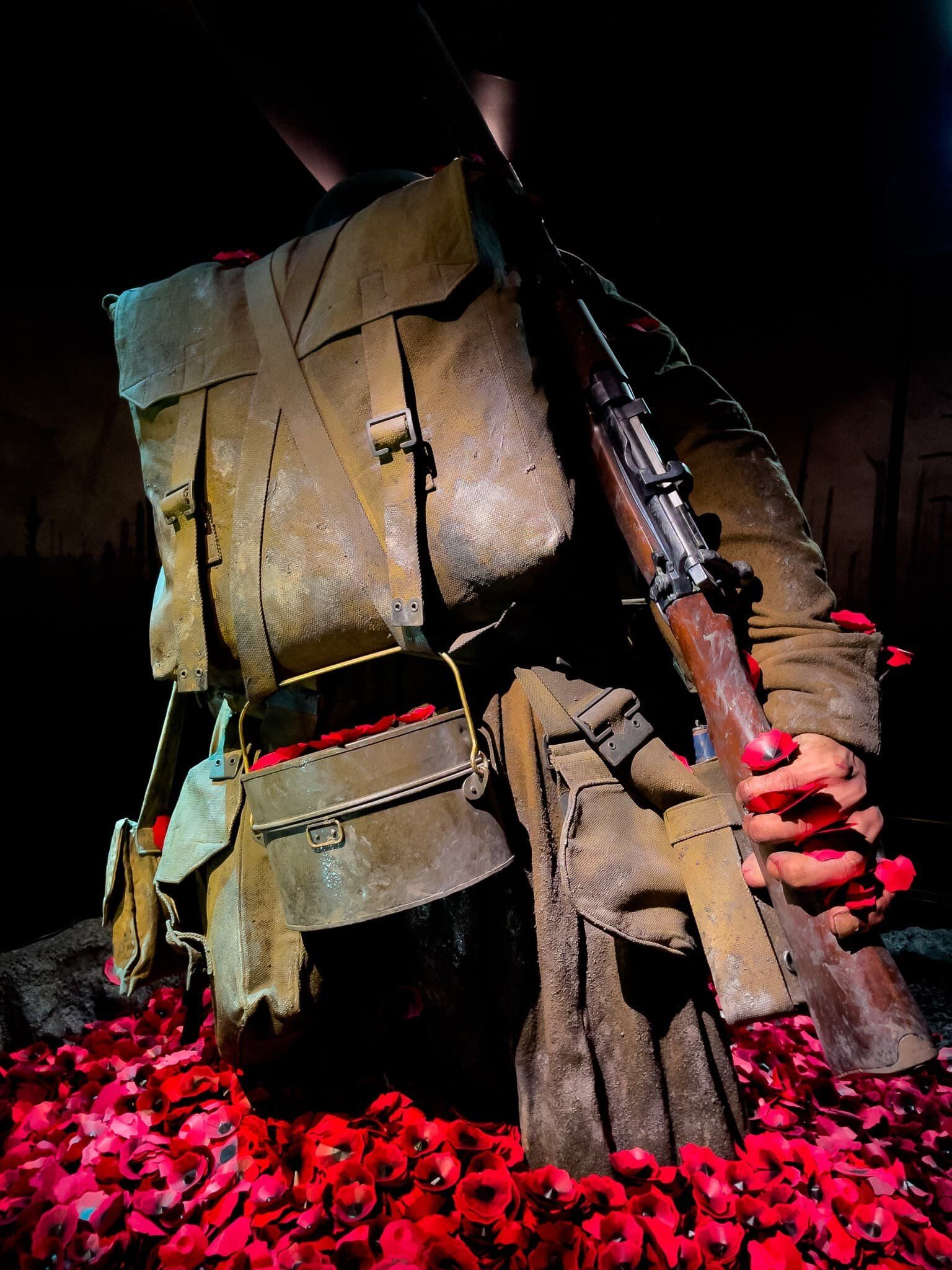Te Papa Tongarewa, the National Museum of New Zealand, is in Wellington at the southern end of the Harbour, behind the marina. It’s the biggest building, so you can’t miss it. The Māori name translates as "container of treasures" in short, or in full "a container of treasured things and people that spring from Mother Earth here in New Zealand".
The museum has its own Act of Parliament, which merged the National Museum of New Zealand and the National Art Gallery and established a remit of exploring the national identity of New Zealand Aotearoa. The building opened in 1998 and has welcomed over 1.5 million visitors annually, making it one of the world's top 30 most visited galleries and museums.
It is worth a few hours and is a great way to round off a wander along the harbour precinct. It is particularly strong on important features of NZ history – Te Tiriti o Waitangi (Treaty of Waitangi), migration, the unique flora and fauna of Aotearoa and our often scary geology, with volcanoes and earthquakes.
One of the most astounding displays at Te Papa is the Gallipoli exhibition, developed by Weta Workshop. It's a poignant and powerful tribute to the ANZAC assault on Gallipoli in 1916, a 'coming of age' moment in NZ and Australia. This event is the basis for ANZAC Day commemorations today and the many war memorials you see throughout NZ. The exhibition features lifelike but oversized models of campaign participants, based on actual events, providing a unique and immersive experience.
